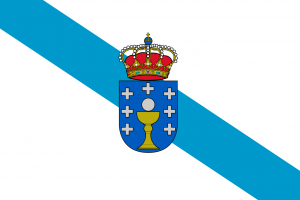Language/Galician/Grammar/Negation
Hi Galician learners! 😊
In this lesson, we will learn how to use negation in Galician. Negation is used to indicate the absence, rejection, or denial of something or someone. It is a fundamental element of any language and mastering it is essential to properly communicate in Galician. So let's dive into it!
Negation with non-verb forms
The most straightforward way to use negation in Galician is by adding the word "non" in front of the word that we want to negate. For instance:
| Galician | Pronunciation | English |
|---|---|---|
| Non é un can | [non e un kan] | It is not a dog. |
In the example, we used "non" to negate the presence of a dog. You can use "non" in any sentence with a noun, pronoun, adjective, or adverb that requires a negative form.
Negation with verb forms
When it comes to verbs, negation in Galician is a bit more complex. To negate a verb, we use the negation particle "non" plus the verb in its infinitive form.
For instance, let's consider the verb "falar" ("to speak") in its affirmative and negative forms:
| Galician | Pronunciation | English |
|---|---|---|
| Eu falo galego. | [eu falo galego] | I speak Galician. |
| Eu non falo galego. | [eu non falo galego] | I don't speak Galician. |
As you can see, we add "non" before the verb in its infinitive form "falar." In this case, "non" is the negation particle, and "falar" is the verb.
Now, let's see a more complex example with a different verb and some subjects:
| Galician | Pronunciation | English |
|---|---|---|
| Ti comes paella. | [ti kumes paeʎa] | You eat paella. |
| Ti non comes paella. | [ti non kumes paeʎa] | You don't eat paella. |
| Ela bebe cervexa. | [ela bebe serʃeʃa] | She drinks beer. |
| Ela non bebe cervexa. | [ela non bebe serʃeʃa] | She doesn't drink beer. |
In Galician, negation is created by adding "non" in front of any verb in its infinitive form.
Double negation
Sometimes, we may want to use double negation in Galician. In such cases, we add "non" before the verb and "nin" after it. "Nin" is used to emphasize the negation already indicated by "non".
Here is an example:
| Galician | Pronunciation | English |
|---|---|---|
| Non fun nada. | [non fun nada] | I didn't do anything. |
| Non fun nin nada. | [non fun nin nada] | I didn't do anything at all. |
In this case, "non" negates the verb, "fun" ("did"), and "nin" emphasizes the negation.
Dialogue
- Person 1: Ti comes carne? ([Do you eat meat?])
- Person 2: Non, non como carne. ([No, I don't eat meat])
Summary
- In Galician, negation is used to indicate the absence, rejection, or denial of something. - To use negation with non-verb forms, we use the word "non" in front of the word we want to negate. - To use negation with verb forms, we use the negation particle "non" plus the verb in its infinitive form. - Double negation is possible using "non" and "nin."
Now you have learned how to use negation in Galician! To improve your Galician Grammar, you can also use the Polyglot Club website. Find native speakers and ask them any questions!
Sources
Related Lessons
- Past Participle in Galician
- Imperative Tense
- Definite Articles in Galician
- Present Tense
- Possessive Case in Galician
- Past Tense
- Be Polite
- Pronouns
- How to Use Have

